Tintypes are made using the same collodion, or wet plate, process that was invented in 1851 and became popular for producing negatives and ambrotypes on glass foundations. Because of their lower cost, shorter exposure times, and greater durability, tintypes eclipsed both the daguerreotype and ambrotype for portrait photography.
In 1856 Hannibal L. Smith patented a process that used a thin sheet of iron that was blackened (or japanned) with asphaltum and used as the support for the collodion emulsion. Originally known as the ferrotype and then advertised as the melainotype, the process became most popular as the tintype, a misnomer, as no tin was used.
To produce a tintype, a japanned iron plate must be perfectly cleaned. Next, collodion, a viscous solution of nitrocellulose dissolved in alcohol and ether, combined with potassium iodide, is poured onto the metal plate until evenly coated. The plate is then submerged in a solution of silver nitrate and becomes light sensitive when the silver combines with iodine to form light-sensitive silver iodide within the collodion emulsion layer. The sensitized plate is then placed in a camera and exposed. After exposure, the plate is developed in pyrogallic acid. A fixer of sodium thiosulfate, or hypo, is necessary to keep the plate from exposing further. The plate is then washed and dried.
Tintypes made portrait photography widely affordable. Being on metal, tintypes were much more durable than ambrotypes, which allowed them to be sent through the mail and carried on a person, attributes that made them popular during the Civil War.

Shakespeare, N. Orleans, a Jamaica Negro
whole-plate tintype, trimmed; ca. 1871
by an unknown photographer
The Historic New Orleans Collection, 1965.90.268.3
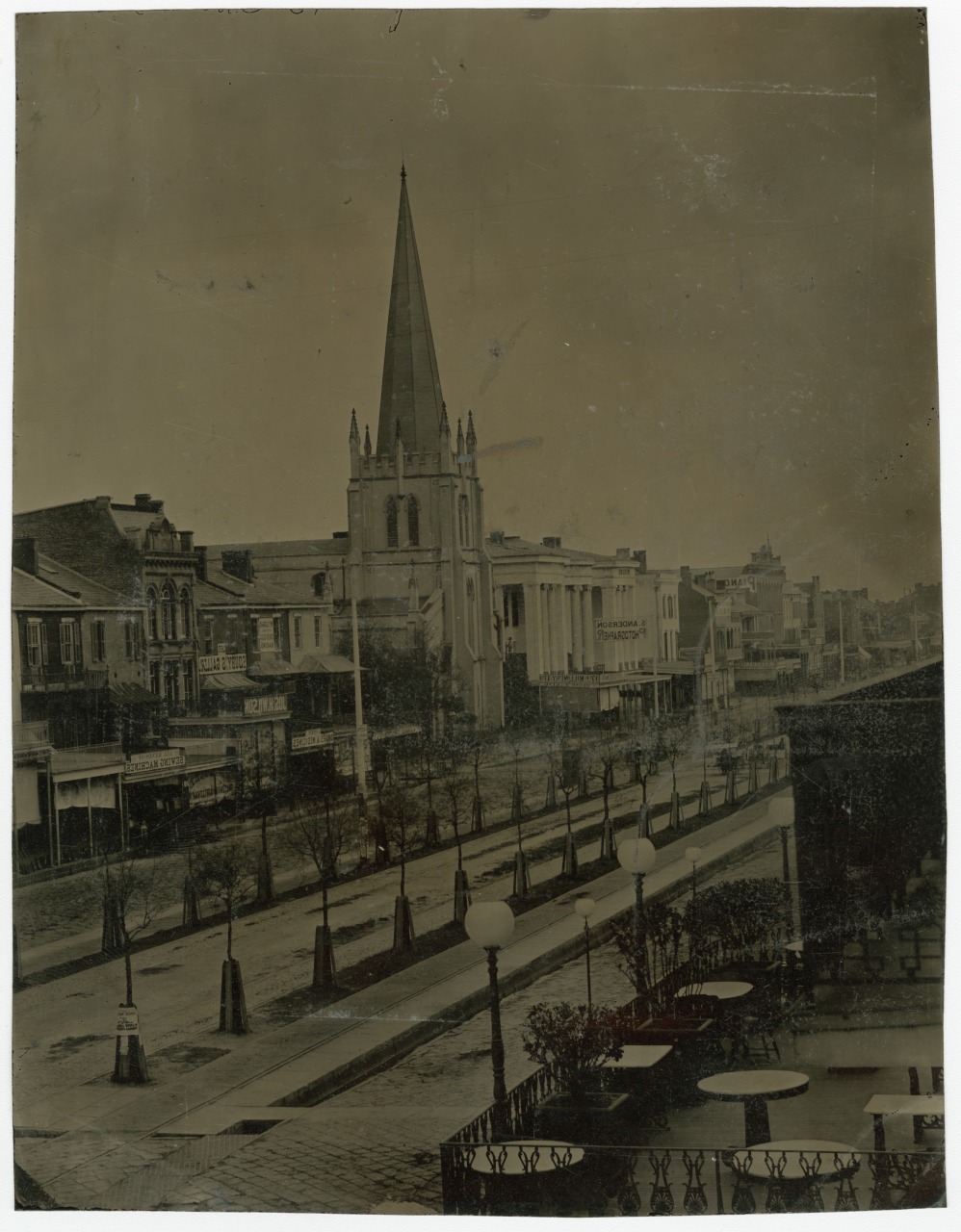
Christ Church and Canal Street
whole-plate tintype; 1871 or 1872
by an unknown photographer
The Historic New Orleans Collection, 1965.90.268.5
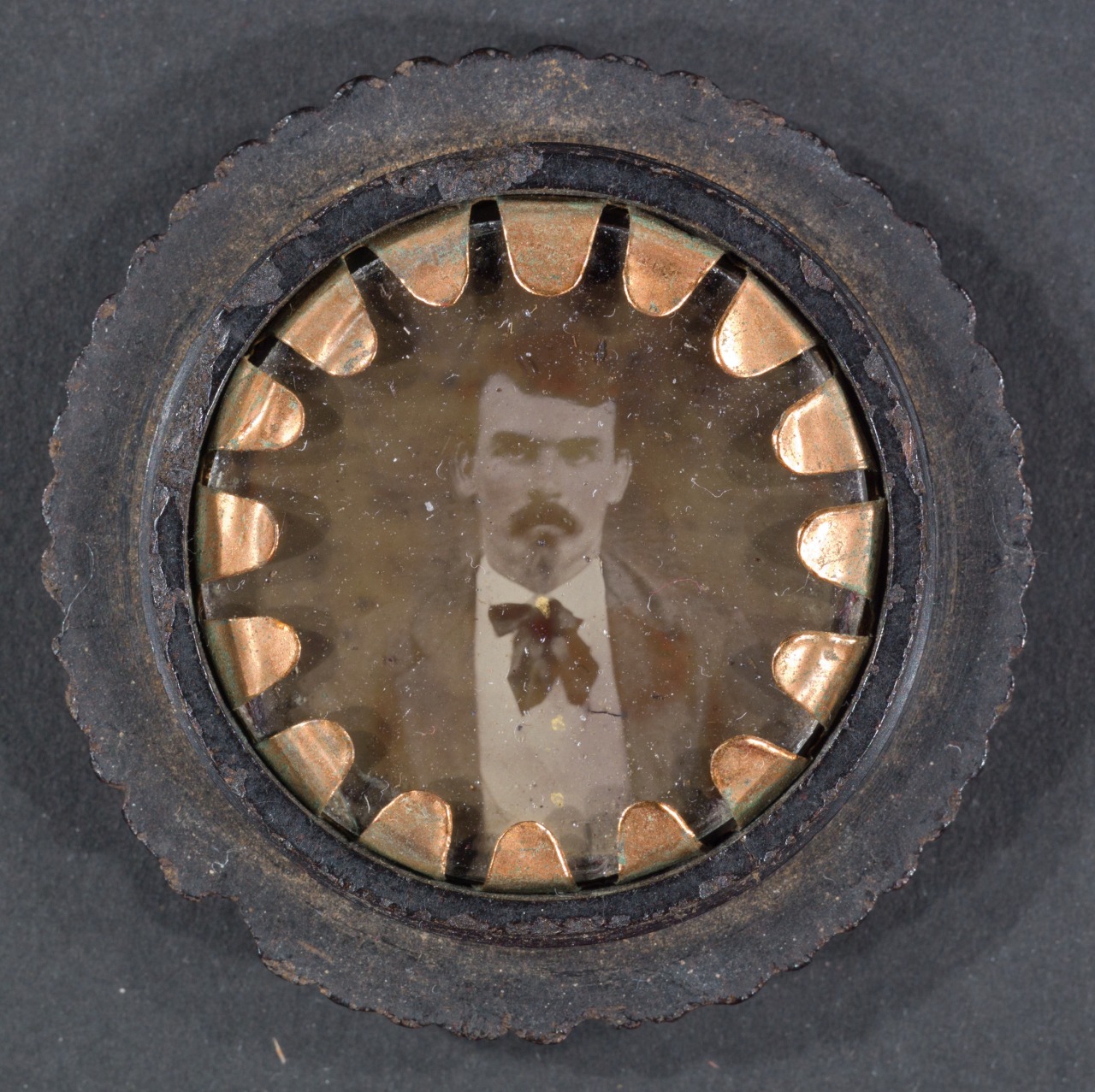
Portrait of an unidentified man in a Union case
gem tintype in “Oreo” thermoplastic case; ca. 1865
by an unknown photographer
The Historic New Orleans Collection, 1980.88.2
gift of G. Henry Pierson Jr.
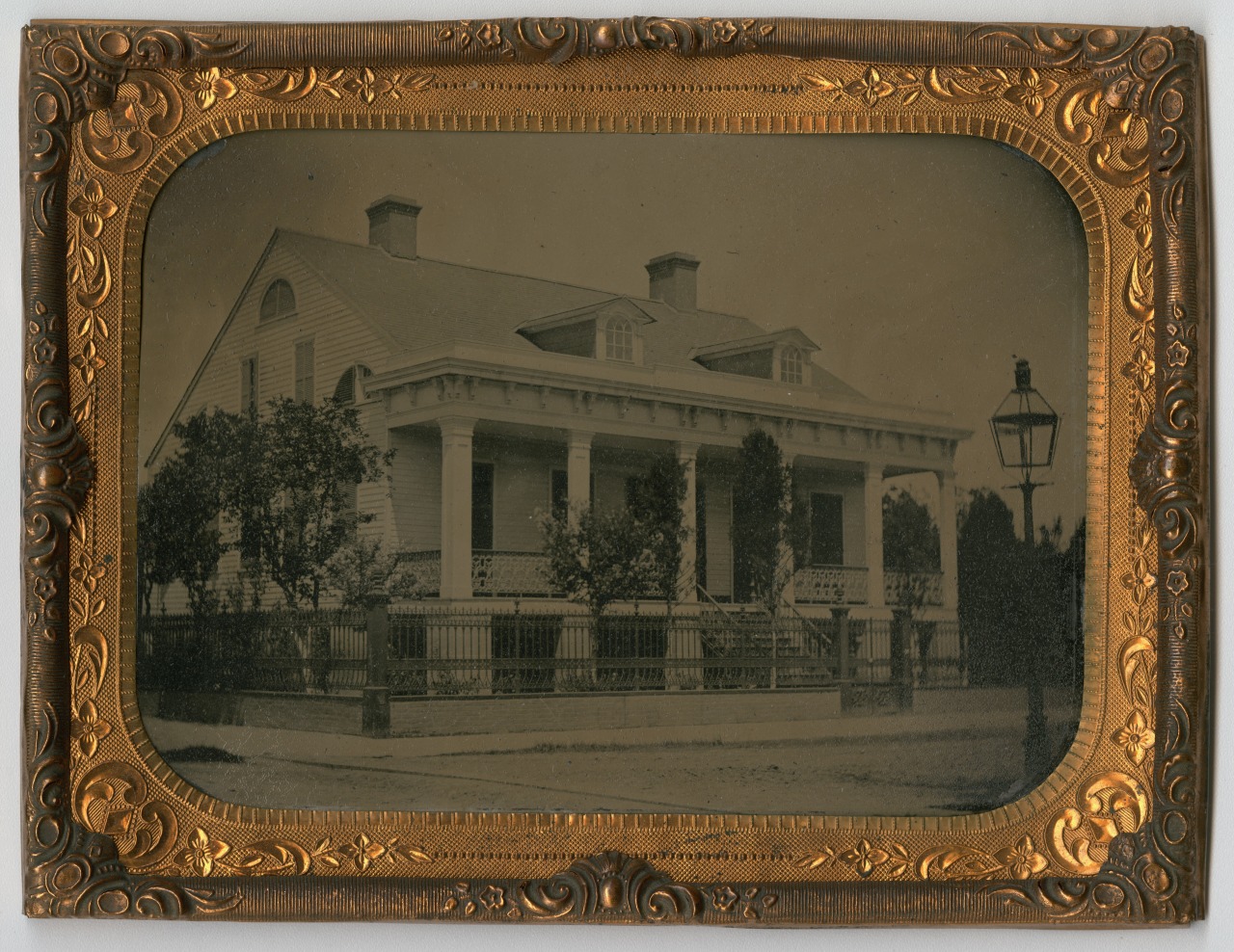
Raised center-hall residence
half-plate tintype; ca. 1865
by an unknown photographer
The Historic New Orleans Collection, 1981.238.2
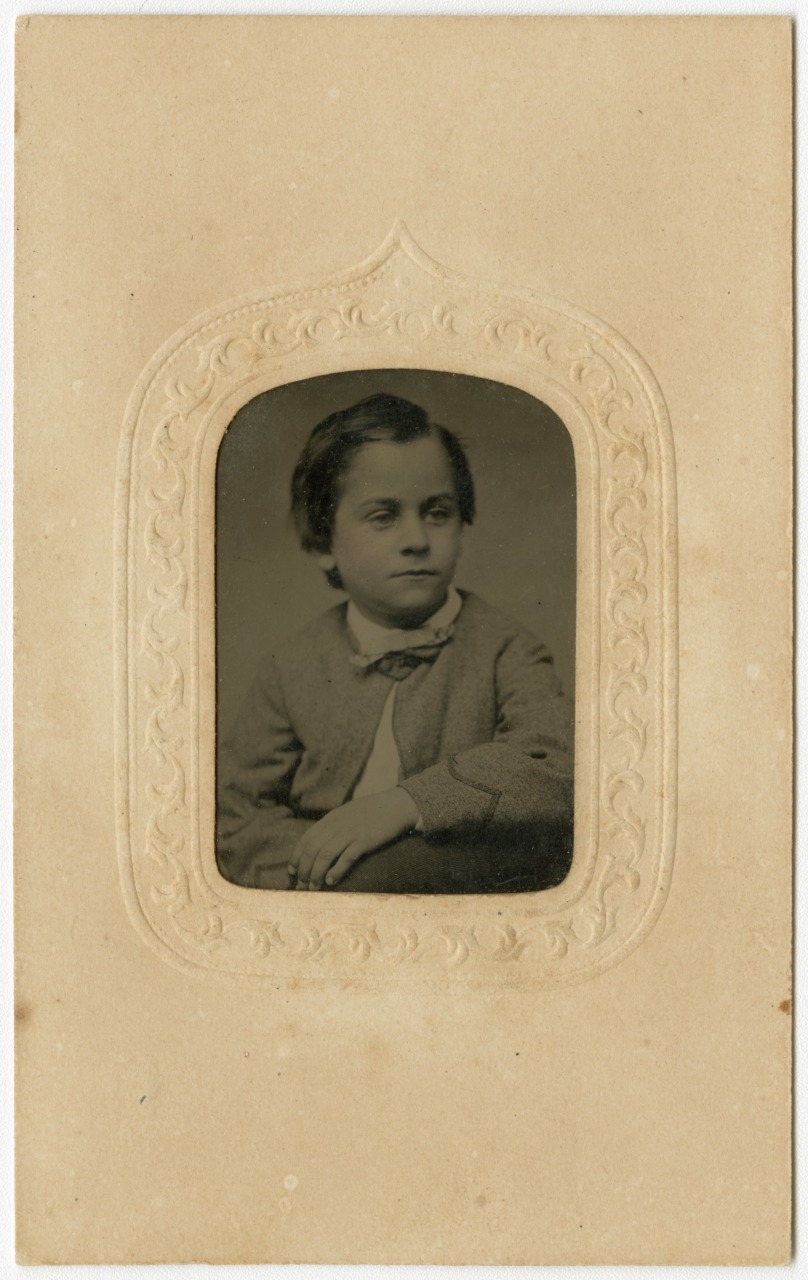
Willie Sanger
sixteenth-plate tintype; ca. 1865
by J. S. McAllister
The Historic New Orleans Collection, 1987.102.1.24
gift of Mrs. Robert D. Irvine
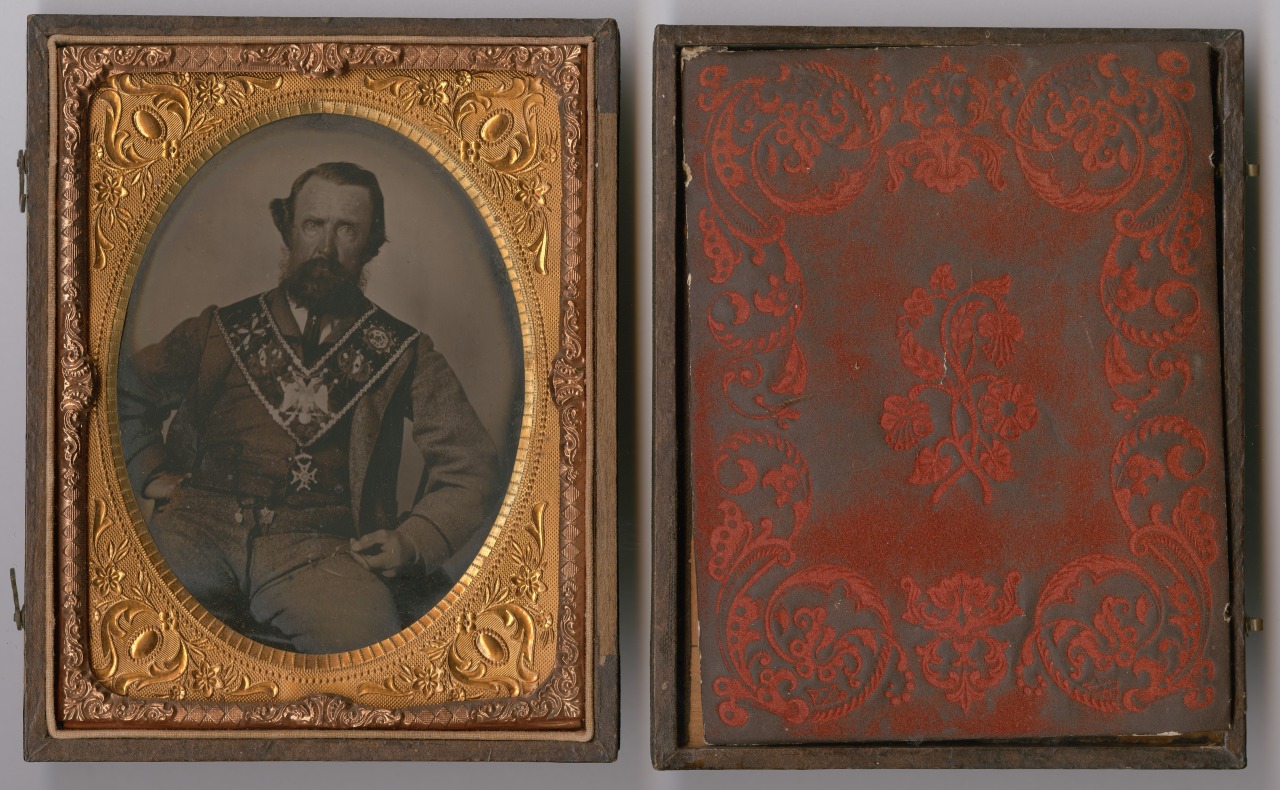
Thomas Cripps wearing Masonic collar
quarter-plate tintype; ca. 1869
by an unknown photographer
The Historic New Orleans Collection, 1993.76.7 a,b
